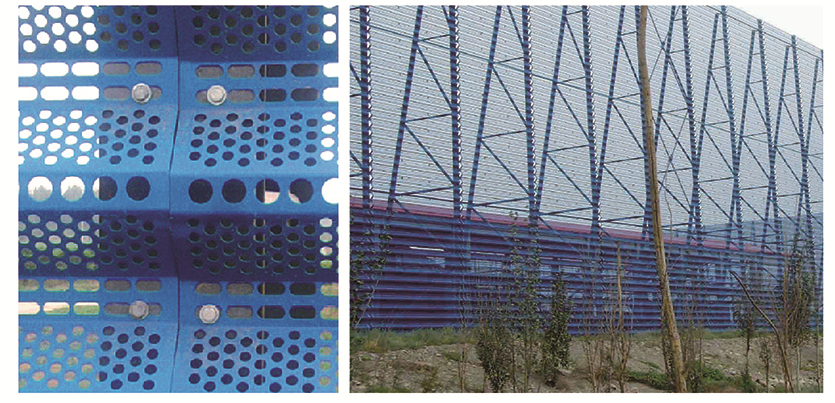The Role of Construction Sound Barriers in Urban Development
In the contemporary landscape of urban development, the consideration of noise pollution has become increasingly significant. With the relentless expansion of cities and the rise of infrastructure projects, there’s an urgent need to address the negative impacts of construction noise on surrounding communities. One innovative solution that has gained traction is the use of construction sound barriers. These structures not only mitigate noise but also contribute to the overall quality of life in urban environments.
Understanding Sound Barriers
Sound barriers, also known as noise barriers or acoustic barriers, are structures designed to reduce the noise impact generated during various construction activities. They are typically made from materials such as concrete, metal, or composite materials, which have proven effective in sound attenuation. The primary function of these barriers is to block and absorb sound waves produced by construction machinery, vehicles, and other associated activities.
When strategically placed, sound barriers can significantly reduce the amount of noise that reaches nearby residential and commercial areas. This is particularly important in dense urban settings where homes, schools, and businesses are often located close to construction sites.
Benefits of Construction Sound Barriers
1. Protection of Public Health Exposure to high levels of noise can lead to a range of health issues, including stress, sleep disturbances, and cardiovascular problems. By limiting the noise levels coming from construction sites, sound barriers contribute to a healthier living environment for residents.
2. Increased Property Value Communities that invest in sound-proofing measures tend to have higher property values. Noise pollution is a significant concern for potential home buyers and renters, and areas with effective sound barriers can be more appealing, thereby enhancing real estate attractiveness.
3. Enhanced Comfort and Productivity Noise can be a major distraction, especially in environments like offices and schools. By using sound barriers during construction, the comfort of working and learning spaces is maintained, allowing individuals to concentrate better, thereby increasing productivity.
construction sound barrier

4. Environmental Benefits Many sound barriers are designed with eco-friendly materials and can even include vegetation or green walls, which provide additional benefits such as improved air quality and enhanced aesthetics in urban areas.
Design and Implementation Considerations
The effectiveness of sound barriers depends on various design factors, including height, length, and material type. Acoustic engineers typically analyze the specific noise profiles of construction projects to create tailored solutions. For instance, taller barriers tend to provide better sound insulation, but they must also comply with local regulations and aesthetic considerations.
Furthermore, the placement of these barriers is crucial. They should be positioned as close to the noise source as possible, while also accounting for the surrounding environment. In addition to static barriers, mobile sound barriers can be deployed at varying locations on construction sites, providing flexibility in addressing noise control.
Future Innovations
As technology progresses, the design and functionality of sound barriers are also evolving. Innovations in material science offer the potential for lighter, more effective sound attenuating materials that are easier to install and more cost-effective. Advanced monitoring technologies can also be integrated into sound barriers to measure noise levels in real-time, allowing for immediate adjustments and improvements during construction activities.
Conclusion
Construction sound barriers are a vital component of modern urban planning and development. They serve to protect the quality of life for residents, enhance property values, and create a more productive environment. As cities continue to grow, implementing effective noise mitigation strategies will be essential in creating sustainable, livable communities. By investing in sound barrier technology, urban planners and construction companies can contribute to building not just structures, but also healthier, quieter communities for future generations.
-
Versatility of Expanded Aluminum Metal for Various Applications
NewsMay.19,2025
-
The Geometry of Steel Gratings: Why It Matters
NewsMay.19,2025
-
Reinforcement Applications of Perforated Mesh in Masonry
NewsMay.19,2025
-
Essential Tools for Installing a Deck Mesh Railing
NewsMay.19,2025
-
Anti-Slip Flooring Made with Stainless Expanded Mesh
NewsMay.19,2025
-
Adjustable Steel Grating for Uneven Terrain
NewsMay.19,2025
Subscribe now!
Stay up to date with the latest on Fry Steeland industry news.

